Chromatic wheel and color wheel for your designs

Understanding the basics of the color wheel will help you. You will significantly influence your color scheme choices, especially if you are not in the market well versed in the universe of color theory.
What What are complementary colors
To do this, we are going to delve into color theory, seeing how colors are composed, using the chromatic circle or color wheel:
- The chromatic circle constitutes a circular and ordered representation of colors, according to their hue or tone.
- In the color wheel we can find:
- Primary colors: are those that cannot be achieved through the mixture of other colors and, in turn, give rise to all other colors through their mixtures. These colors are magenta, blue and yellow.
- Secondary colors: which we obtain through mixing, in the same proportions, two primary colors. For example, green is a secondary color resulting from the mixture of blue and yellow.
- Tertiary colors: we get them by mixing a primary color with an adjacent secondary color (located in a position close to it on the color wheel). As an example, we would have bluish green or red.
- We build the chromatic circle from the three primary colors, obtaining the rest of the tones from the different mixtures we make between them. In this case, we have represented 12 shades, but the possibilities are practically endless.
What are complementary colors and what are they for?
What Is it a complementary color?
They are those that are opposite (in opposite positions) on the color wheel, as is the case of green and magenta, for example.
What for? Do complementary colors serve in paint?
- We can use them to generate contrast, since complementary colors intensify each other. Thanks to this contrast, we can highlight certain areas of our work to which we want to give greater prominence.
- To dull a tone, making it more gray or brownish, we can mix it with its complementary tone, thus generating a tone. a broken tone.
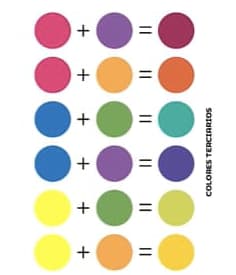
You have to understand the science behind what makes certain color combinations look good. Like chords, groups of notes with specific intervals between them, that sound pleasing to our ears, groupings of colors based on specific positions on the color wheel look pleasing to our eyes. And so Since these pleasing chords are called harmonies, groups of visually pleasing colors are known as color harmonies.
How does the color wheel work?
The chromatic circle or color wheel is a graph that shows the relationships between colors. The concept dates back to 1666, when Sir Isaac Newton identified the spectrum of six colors that he saw when he passed white light through a prism. Later, the relationships between these colors and the psychological effects of each color were studied and understood more thoroughly, creating the field of color theory.
Color theory is the set of guidelines that artists and designers use to make color choices that achieve specific goals while also being aesthetically pleasing to viewers. Within color theory, the color wheel is the most prominent pattern; it is the graphic representation of all color relationships.
A simple color wheel consists of 12 color shades arranged around a central axis.
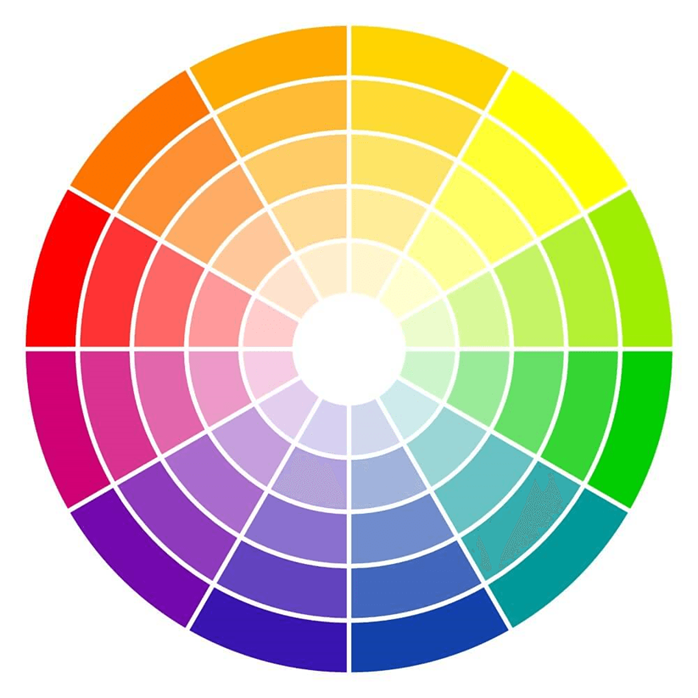
All colors come from some combination of primary colors. The three primary colors are red, blue and yellow. These three colors are essentially the parents of all other colors.
On the color wheel, colors - also known as hues - are divided into three main categories:
- Primary colors: Red, blue and yellow are the three primary colors. These are the colors that cannot be created by mixing other colors. Instead, all other colors are created by mixing some combination of them.
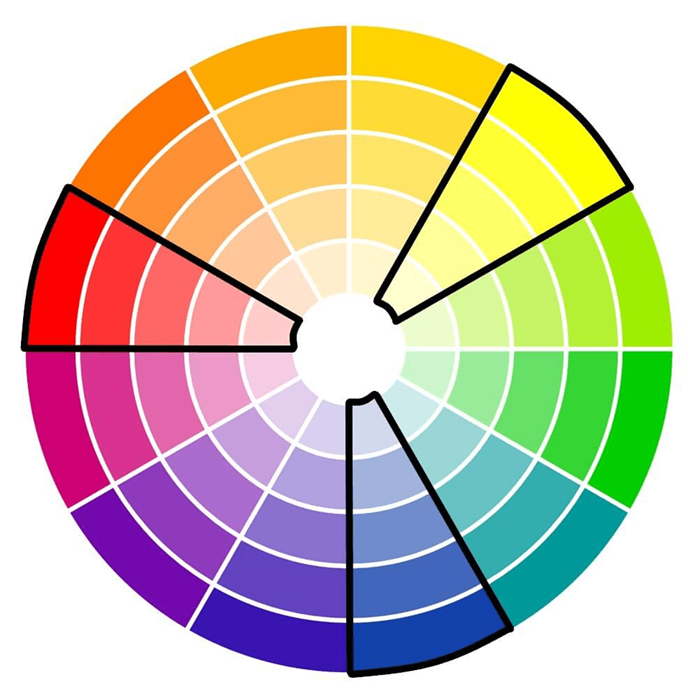
-
Secondary colors: Orange, green and purple are the three secondary colors. These are the colors that are created by mixing combinations of primary colors, such as blue + yellow = green.
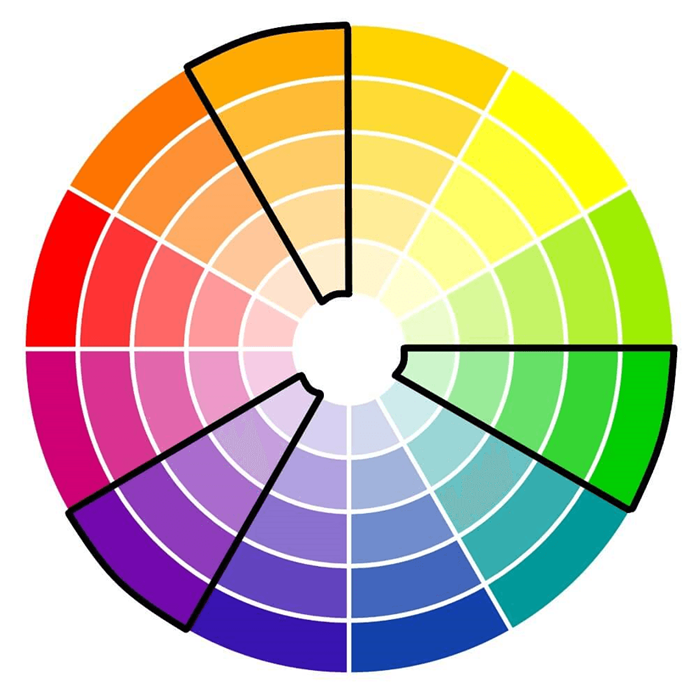
-
Tertiary colors: Tertiary colors are the colors that exist between the primary and secondary colors. For example, orange-red is the tone that exists between orange and red. These colors are created by mixing two adjacent colors, such as mixing yellow and green to create yellow-green. The only way to create a tertiary color is to mix a primary color and a secondary color that are next to each other on the color wheel; it is not possible to create a yellow-blue or an orange-purple.

But that's not all you need to know about the color wheel. There are also nuances, shades and tones.
A hue is the opposite of a shadow. It is a lighter version of a color created by mixing the base color with white.
A tint is created by adding black to a color. Create a darker, richer version of that color.
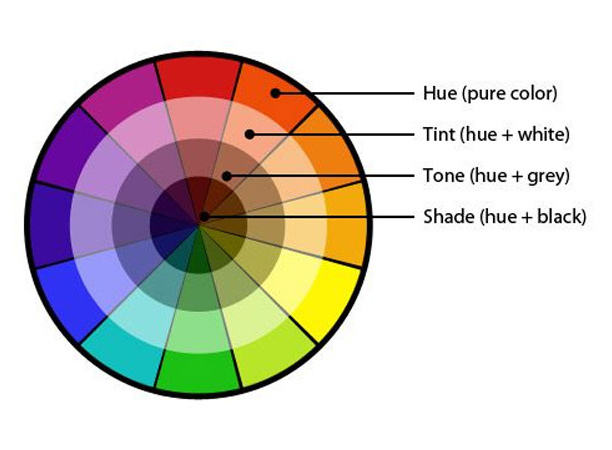 A tone is a faded, neutralized version of a color created by mixing it with gray. Shades are often used to create a pastel look.
A tone is a faded, neutralized version of a color created by mixing it with gray. Shades are often used to create a pastel look.
Using different tints, shades, and tones in your logo's color palette can add levels of complexity that you couldn't get by just using basic tones. For example, you can choose a color palette that has a dark blue tone contrasted with a bright, almost neon orange tone that appears especially bright next to your deep blue.
Like this ; So now that you have all the notes, are you ready to start making music? Let's take a look at the different ways you can arrange color harmonies to make your logo sing beautifully.
Color combinations will be explained in another entry.
- visits: 4735
- 25-05-2018
- DIY
Last entries
How do you know what year a Barbie is?
This is the great dilemma that many collectors or non-collectors face when they want to date a Barbie doll. Many people mistakenly believe that just by looking at the date on the body or the date on the...
Read moreColors in several languages
To be able to sell or buy miniatures, hair for reroot, paints for repaint, etc. At an international level, sometimes it is difficult for us to understand the colors of the item, that is why I have thought...
Read moreWool Hair for dolls
Wool hair can be purchased from doll hair suppliers. Pure wool is obtained from sheep. This type of "hair" looks and acts like mohair. This type of "hair" is ideal for more ethereal creations such as fairies,...
Read more
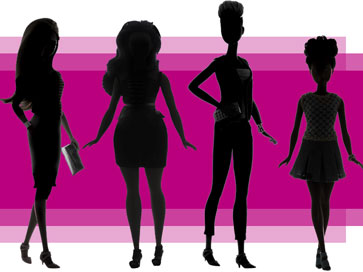

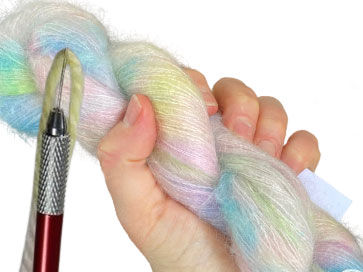


 See on Amazon
See on Amazon

